

CLINICAL
RESULTS
Clinically Proven
Added Protection for the organ at risk, reducing side effects.1


Barrigel Pivotal Trial Results
TREATMENT PROTOCOL
TREATMENT
PROTOCOL
Hypofractionated radiation therapy (HFRT) – effective and more convenient
The utilization of HFRT has dramatically increased in recent years because it gives:4
- Excellent tumor control
- Low level of side effects
- Increased convenience for patients, compared with a conventional fractionation schedule
While this modern form of radiation allows for higher doses given in fewer fractions, the rectum remains at risk for exposure. Given that HFRT has been associated with greater acute grade 2+ GI toxicity than conventionally fractionated radiation therapy (CFRT), rectal spacing may address a clinically important need for the large volume of patients receiving this effective and convenient treatment.1
The Barrigel pivotal trial is the FIRST FDA-reviewed randomized controlled study of rectal spacing using hypofractionated radiation therapy.


CONTROL MATTERS FOR
IMPROVED OUTCOMES¹
CONTROL MATTERS FOR IMPROVED
OUTCOMES¹
Barrigel is proven effective at achieving a clinically significant reduction in radiation dose to the rectum, leading to fewer rectal side effects
In the Barrigel pivotal trial, 98.5% of patients met the primary endpoint of achieving at least a 25% reduction in rectal V54 Gy* (p<0.001)
*54 Gy is 90% of 60 Gy
- RADIATION PROCTITIS
- DIARRHEA
- HEMORRHOIDS
CONTROL MATTERS FOR
MINIMIZING RISKS
CONTROL MATTERS FOR MINIMIZING
RISKS
In the Barrigel pivotal trial, there were:1
- ZERO Barrigel-related adverse events
- ZERO Peri-procedural events
- ZERO Adverse events of rectal fullness
- ZERO Patient complaints of rectal pain or discomfort following the procedure
To date, there have been:
- ZERO Barrigel adverse events2,5
- ZERO Embolisms reported in the MAUDE database5


CONTROL MATTERS FOR
IMPROVED SYMMETRY
CONTROL MATTERS FOR IMPROVED
SYMMETRY
BARRIGEL
BARRIGEL

Implant Symmetry RESULTS6 >95%
Pivotal Trial Patients; % of implants centered on prostate midline
PEG HYDROGEL
PEG HYDROGEL
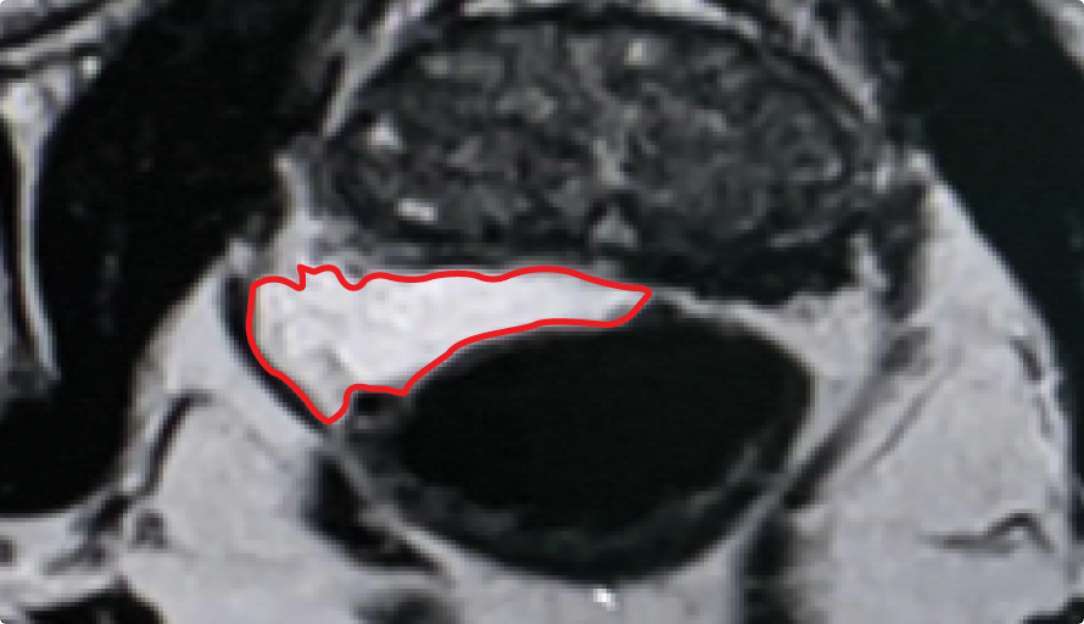
Implant Symmetry RESULTS7 >49%
Pivotal Trial Patients; % of implants centered on prostate midline
CONSISTENLY CREATE
SYMMETRICAL IMPLANTS,
FROM DAY 1
CONSISTENLY CREATE SYMMETRICAL IMPLANTS, FROM
DAY 1
First Barrigel Cases - Consecutive Patients (Same Day)
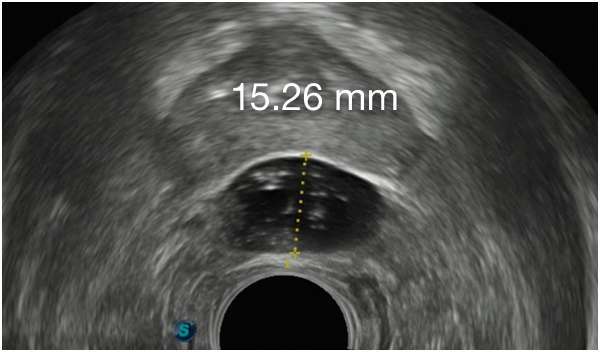

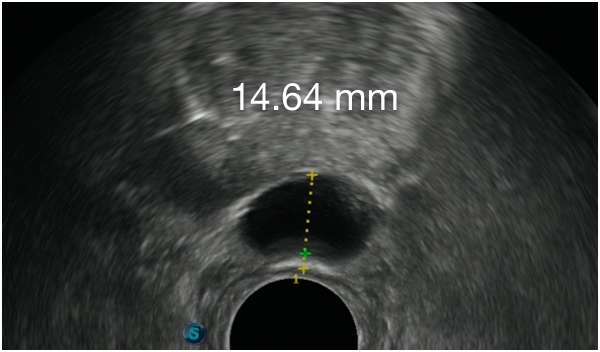
TRUS images courtesy of Daniel R. Welchons, MD
Urologist; New York, United States
DR. WELCHONS’ INJECTION TECHNIQUE


IN RECTAL SPACING
STABILITY MATTERS
IN RECTAL SPACING STABILITY
MATTERS
PATIENT EXAMPLE SHOWING
STABLE SEPARATION DURING RESORPTION
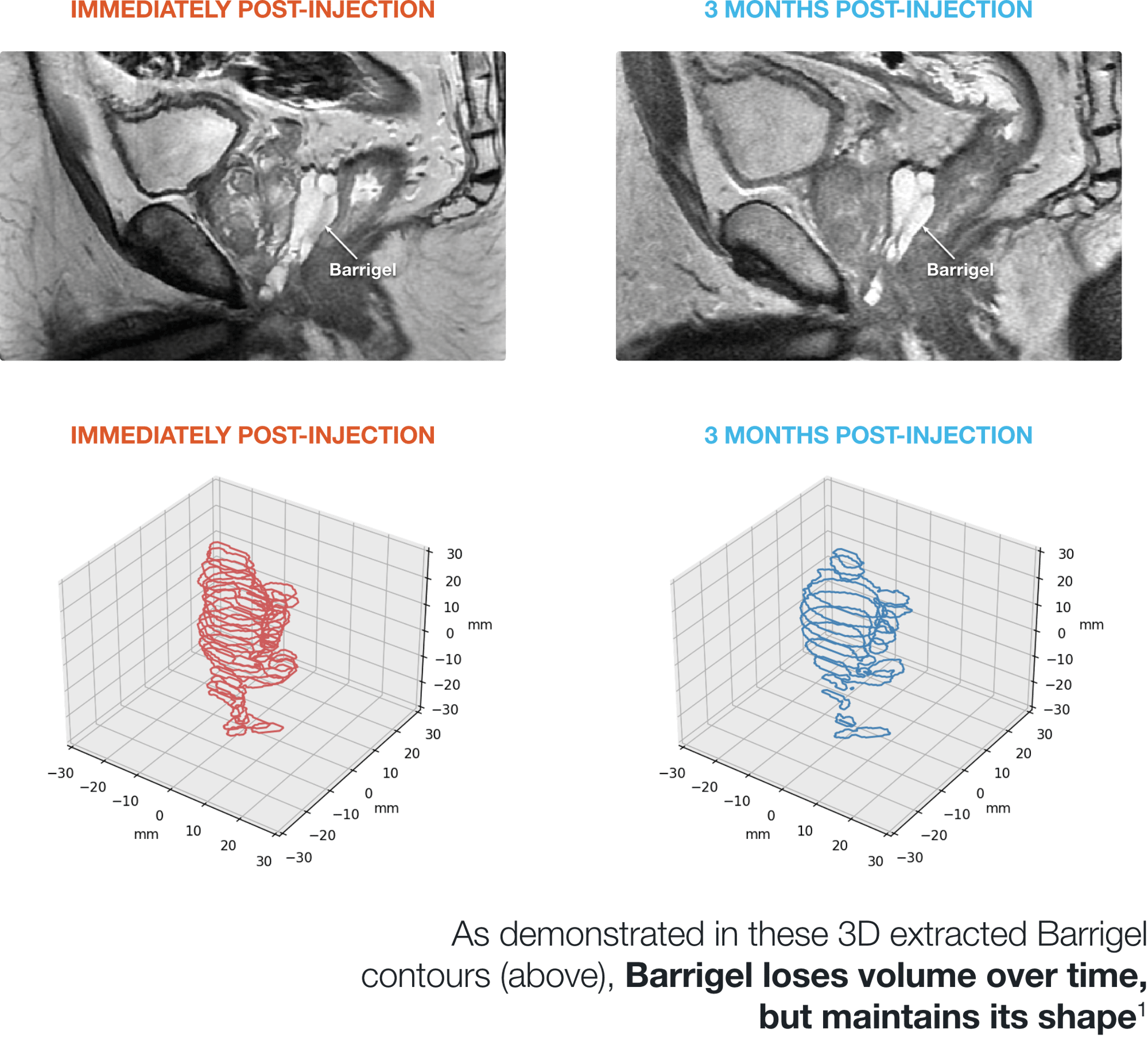
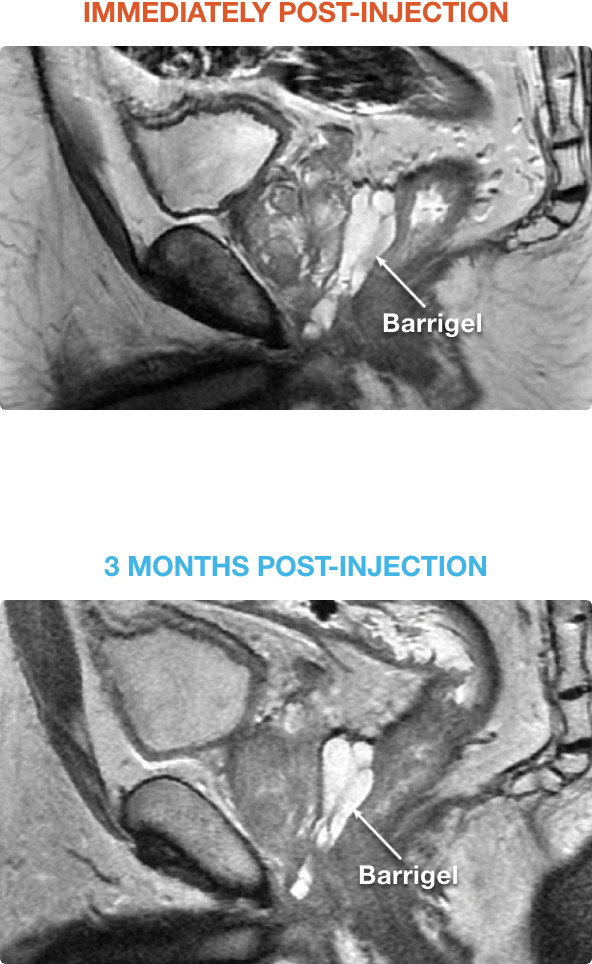
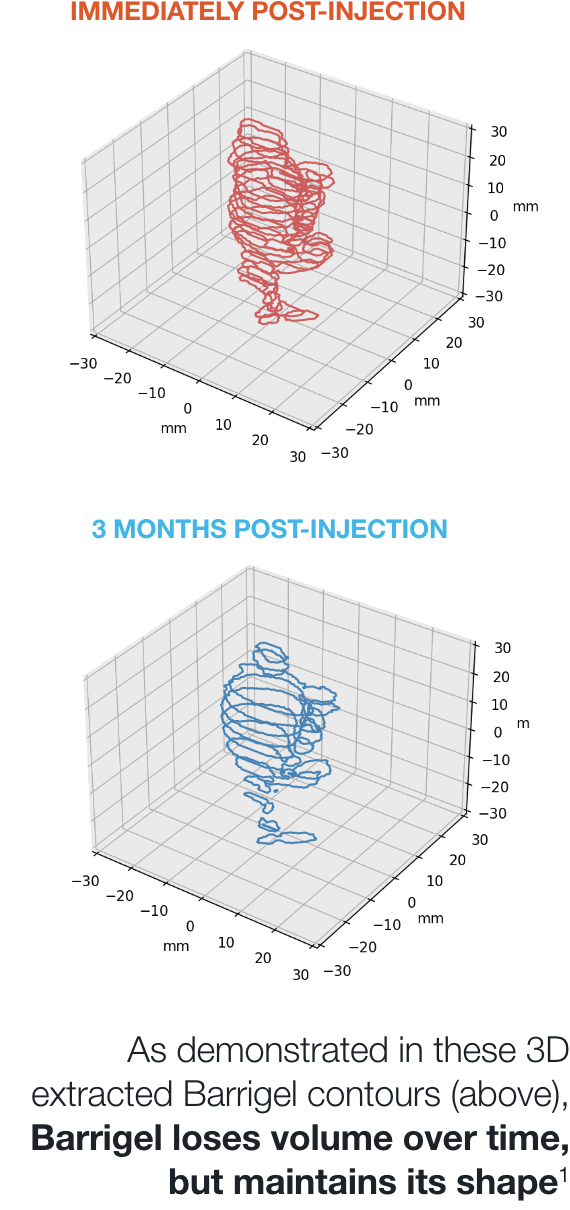
MEAN PROSTATE-RECTUM SEPARATION (DIMENSIONAL STABILITY)
References
1. Mariados NF, Orio PF III, Schiffman Z et al. Hyaluronic acid spacer for hypofractionated prostate radiation therapy: A randomized clinical trial. JAMA Oncol. 2023: e1-e8.
2. Data on file. Palette Life Sciences.
3. Mariados N, Sylvester J, Shah D. Hydrogel Spacer Prospective Multicenter Randomized Controlled Pivotal Trial: Dosimetric and Clinical Effects of Perirectal Spacer Application in Men Undergoing Prostate Image Guided Intensity Modulated Radiation Therapy. Int J Radiat Oncol Biol Phys. 2015 Aug 1;92(5):971-977.
4. Dearnaley D, Syndikus I, Mossop H et al. Conventional versus hypofractionated high-dose intensity-modulated radiotherapy for prostate cancer: 5-year outcomes of the randomised, non-inferiority, phase 3 CHHiP trial. Lancet Oncol. 2016;17:1047–60.
5. MAUDE Database.
https://accessdata.fda.gov. Accessed 6/22/2023.6. King M, Svatos M, Chell EW. Assessment of NASHA Spacer Symmetry For Prostate Radiation Therapy. [ABSTRACT] Presented at American Brachytherapy Society Annual Conference, June 19, 2022.
7. Fischer-Valuck BW, Chundury A, Gay H. Hydrogel spacer distribution within the perirectal space in patients undergoing radiotherapy for prostate cancer: Impact of spacer symmetry on rectal dose reduction and the clinical consequences of hydrogel infiltration into the rectal wall. Pract Radiat Oncol. 2017 May-Jun;7(3):195-202.